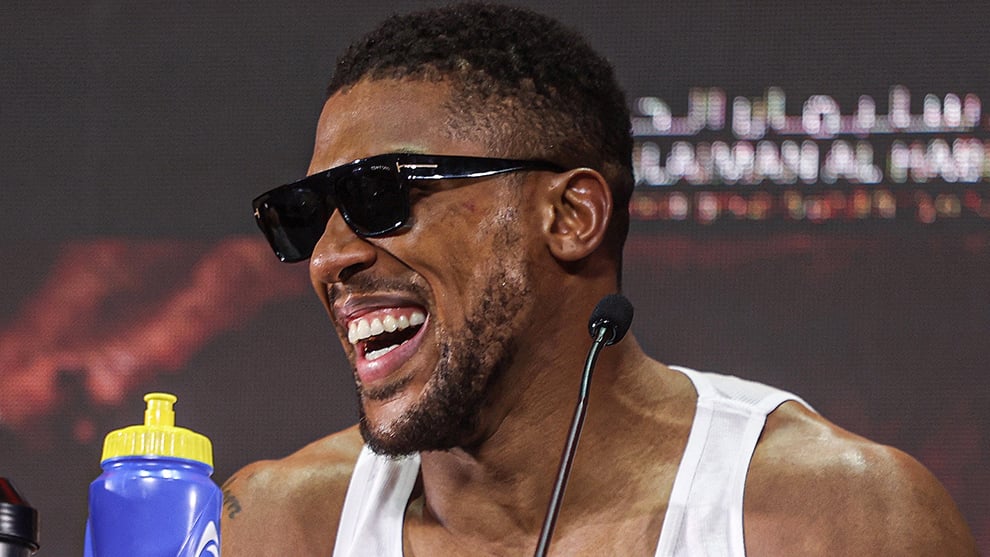By Ruth Raper
BOXING is a machine that never stops moving, each day bringing a new headline and, with that headline, the possibility of a new champion or the downfall of an existing one.
The stars that shine brightly today will be largely forgotten tomorrow. Some will remain in the public eye as pundits, or by making the occasional public appearance. Some will go on to become coaches or managers, but most will fade into obscurity, only remembered by boxing geeks.
If we take a look at our current crop of stars, fighters that are able to sell out arenas, capture the public’s imagination, and climb into the infamous pound-for-pound list (these things do not always overlap), it is clear that many of them are in the twilight years of their careers.
Saul ‘Canelo’ Alvarez is the only active boxer present in the top five biggest money fights in history (against Floyd Mayweather), reportedly generating $150m in PPV buys and $20m at the gate. Canelo is now 34 years old and although he makes no mention of retiring, there can be no doubt that he only has a few fights left before he hangs up the gloves.
Jayne Kamin-Oncea/USA Today Sports
Not all stars are capable of putting up huge numbers at the Box Office, especially since the retirement of Floyd ‘Money’ Mayweather; few seem to be able to compete with the way he would draw unprecedented numbers, fight after fight.
You can always rely on the heavyweight division to get the attention of casual fans. I often find my friends who usually pay no attention to boxing know the names of the top heavyweights yet have never heard of most of the fighters on the top 10 pound-for-pound list. In recent years, we have been lucky enough to have a number of big personalities and epic clashes within the heavyweight division.
Anthony Joshua has charmed us ever since winning gold at the 2012 Olympics with his Adonis-like good looks and devastating right hand. Tyson Fury has captivated us with his lovable but complex persona that leaves us not knowing what to expect next.
Oleksandr Usyk’s journey from Olympic gold, undisputed cruiserweight champion, to undisputed heavyweight champion (all while his home nation was at war) has given us all the chance to witness a piece of history. With all of these men in their mid-to-late 30s, it seems as though we should be watching the horizon to see who will be on our TV screens and timelines next.
RIYADH, SAUDI ARABIA – MAY 15: Oleksandr Usyk trains during the Ring Of Fire – Open Workouts session ahead of the IBF, IBO, WBA, WBC and WBO Undisputed World Heavyweight Title fight between Tyson Fury and Oleksandr Usyk at BLVD City – Music World on May 15, 2024 in Riyadh, Saudi Arabia. (Photo by Richard Pelham/Getty Images)
The health of our sport depends on having athletes who can become household names, transcending the sport in the process and taking boxing to new audiences. Although we all have our favourite ‘prospects’, it is impossible to predict who will reach the level of stardom it takes to set the world alight, as Robinson, Ali, Leonard, and Tyson did.
It is rarely one singular attribute that allows a fighter to go further than their peers; they usually excel in many areas (combined with a little bit of luck). Let’s take a look at what can help a young boxer rise to the top.
Pedigree. When we refer to a boxer having a good pedigree, we mean they have had an accomplished amateur career. Boxers with an accomplished amateur career are far more likely to have a successful professional career.
Of course, there is always an exception to the rule. Billy Conn, best known for his fights with Joe Louis, was the light-heavyweight world champion from 1939 to 1941 and had zero amateur fights.
The legendary Julio Cesar Chavez, who many would regard as one of the greatest fighters of all time, reportedly had only 14 amateur bouts.
A more recent example of a successful professional boxer with little amateur experience is Fabio Wardley. Wardley had zero amateur bouts (although he did have four white-collar fights), and has since become British, Commonwealth and WBO European Champion.
RIYADH, SAUDI ARABIA – OCTOBER 28: David Adeleye dodges a punch from Fabio Wardley during the British, Commonwealth and WBO European Heavyweight Title fight between Fabio Wardley and David Adeleye at Boulevard Hall on October 28, 2023 in Riyadh, Saudi Arabia. (Photo by Justin Setterfield/Getty Images)
Although the above achievements are extremely impressive, the rule still remains that a good amateur career stands you in good stead when entering the professional ranks. As an amateur boxer moves from a young competitor having their first few bouts on club shows, onto more serious competitions like box-cups, national championships or even international tournaments, they learn skills in and out of the ring that are invaluable.
With some amateurs having their first competitive contest as young as 10 years old, it is easy to see how a boxer who starts their career in their late teens or early 20s is going to struggle to pick up the technical intricacies that their counterpart will have already done.
A few of our current stars who had impressive amateur careers are Vasily Lomachenko, Claressa Shields and Devin Haney. Lomachenko is a two-time Olympic gold medallist with an amateur record of 396-1. Shields is also a two-time Olympic Gold medallist with an amateur record of 77-1, and Haney the 2015 Golden Gloves Champion with a record of 138-8.
Claressa Shields and Maricela Cornejo
It’s no surprise that promoters keep tabs on National Champions and whoever is on Team GB. You will often see Olympians sign lucrative promotional deals straight after returning home from the games.
While punching pedigree is a key component of building a fighting machine, tomorrow Ruth discusses other vital factors and cultural crossovers that help a boxer breakthrough to the masses…
